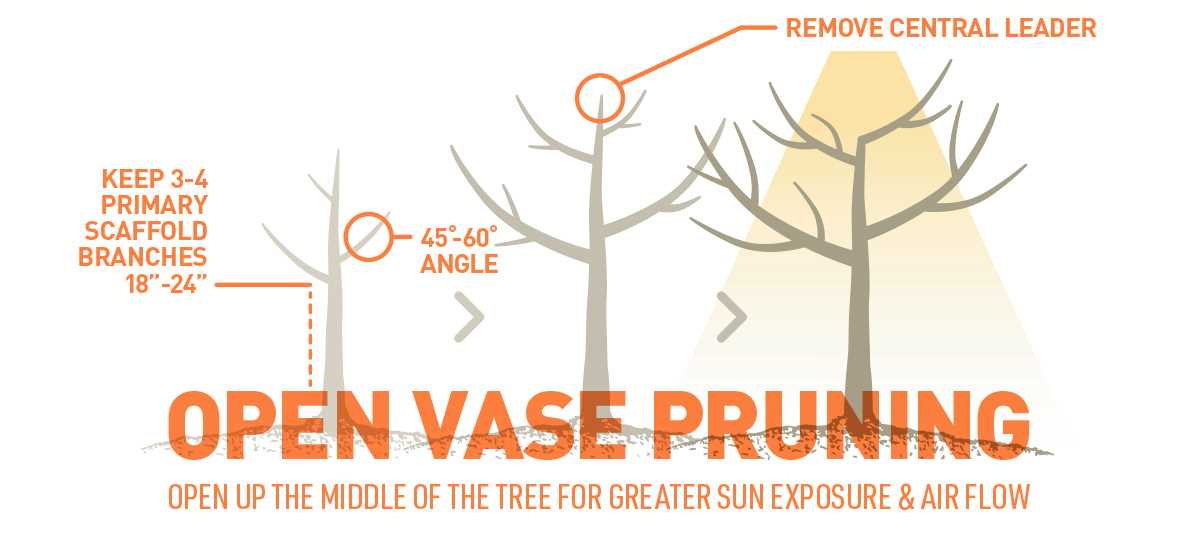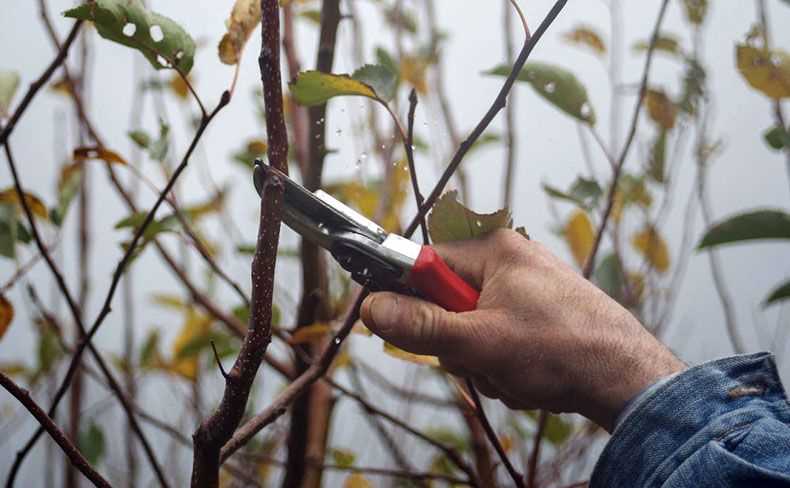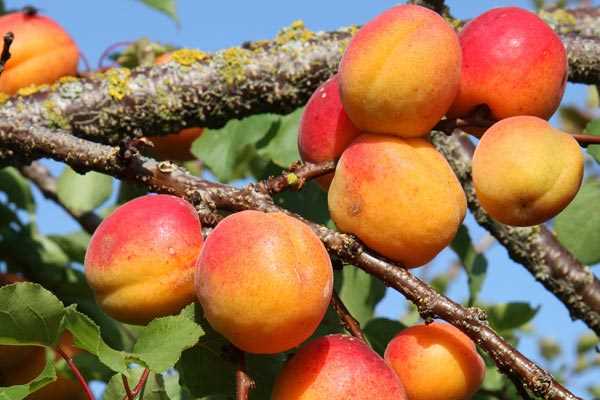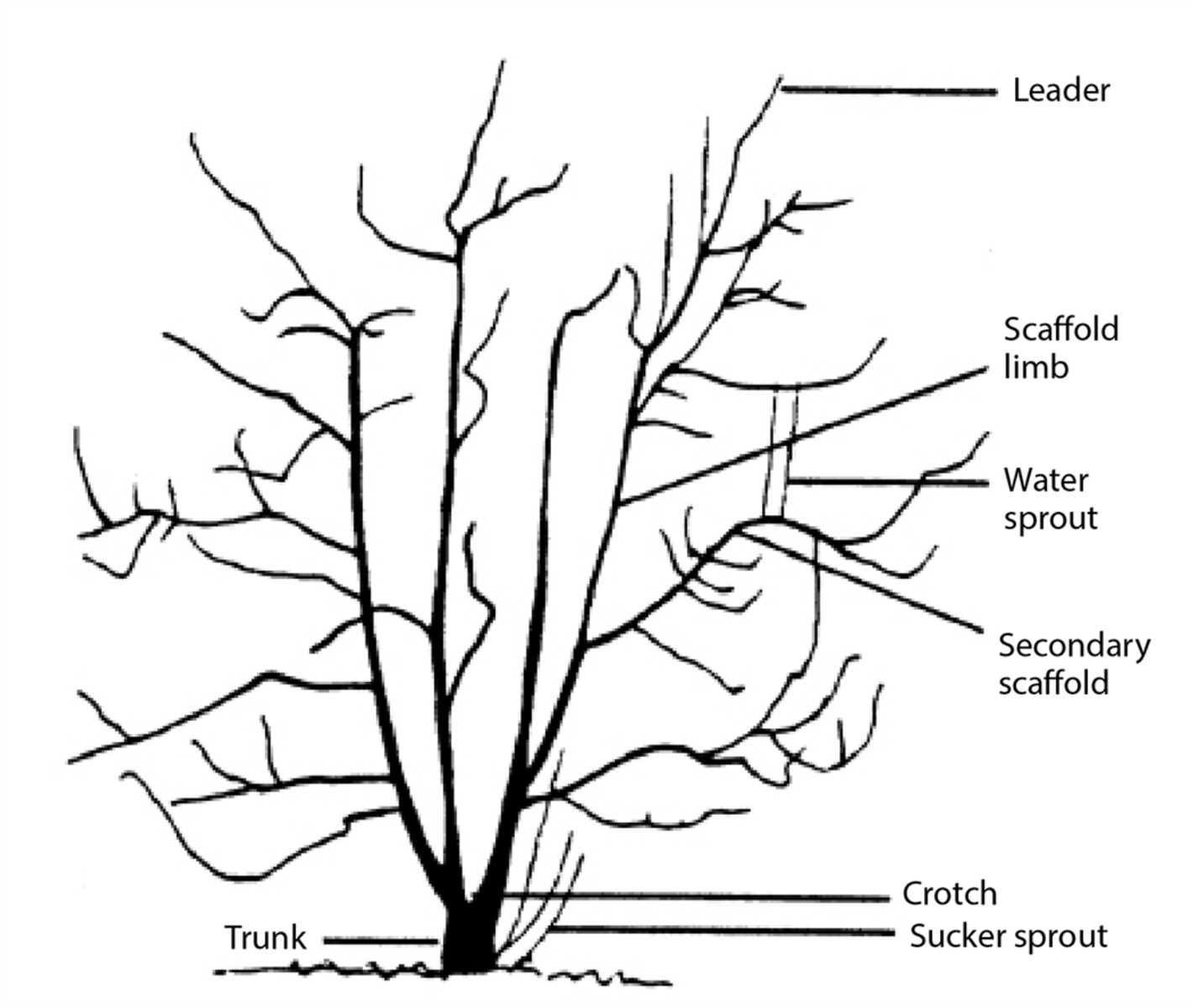- Why Pruning Is Important for Apricot Trees
- 1. Promotes Healthy Growth
- 2. Controls Tree Size
- 3. Improves Fruit Production
- 4. Extends Tree Lifespan
- 5. Assists in Disease Management
- When to Prune Apricot Trees for Optimal Growth
- The Tools You’ll Need for Pruning Apricot Trees
- Step-by-Step Guide to Pruning Apricot Trees
- Pruning Dos and Don’ts for Apricot Trees
- DO: Prune during the dormant season
- DO: Use clean and sterilized tools
- DO: Start with removing dead or diseased wood
- DO: Prune for shape and structure
- DON’T: Over-prune
- DON’T: Prune during rainy or wet periods
- DON’T: Prune too late in the season
- DO: Seek professional advice if unsure
- The Benefits of Pruning Apricot Trees Regularly
- Differences in Pruning Techniques for Apricot Trees vs. Seed Crops
- 1. Timing
- 2. Goals
- 3. Severity
- 4. Fruiting Wood
- Common Mistakes to Avoid When Pruning Apricot Trees
- Question-answer:
- When is the best time to prune apricot trees?
- How much should I prune off my apricot tree?
- What tools do I need to prune an apricot tree?
- Can I prune my apricot tree during the summer?
- How often should I prune my apricot tree?
- What are some common mistakes to avoid when pruning apricot trees?
- Video: Apricot Pruning
Proper pruning is essential for maintaining the health and productivity of apricot trees. While the principles of pruning may seem similar for all types of fruit trees, apricot trees require specific techniques due to their unique growth habits and fruiting characteristics.
Unlike seed crops, which are typically grown for their seeds, apricot trees are grown for their delicious fruit. This means that pruning apricot trees focuses more on maximizing fruit production rather than seed production. Understanding the difference between pruning seed crops and apricot trees is crucial to ensure you are taking the right approach.
When pruning apricot trees, it is important to remove any dead, damaged, or diseased branches. This not only promotes the overall health of the tree but also reduces the risk of pests and diseases spreading. Additionally, removing these branches allows for better air circulation and sunlight penetration, which helps promote fruit development.
Another important aspect of pruning apricot trees is thinning out overcrowded branches. This helps prevent the branches from becoming tangled and aids in creating an open canopy structure. An open canopy allows for better light penetration, which is necessary for proper fruit ripening and flavor development.
Pruning apricot trees in the early spring before the buds begin to break is ideal. This is when the tree is dormant, and pruning wounds can heal quickly. It is best to use sharp, clean pruning tools to make clean cuts and reduce the risk of introducing infections.
In conclusion, proper pruning techniques are crucial for maintaining the health and productivity of apricot trees. Understanding the differences between pruning seed crops and apricot trees is essential to ensure you are taking the correct approach. By removing dead or damaged branches, thinning out overcrowded branches, and pruning in the dormant season, you can promote optimal fruit production and quality.
Why Pruning Is Important for Apricot Trees
Pruning is an essential practice for maintaining the health and productivity of apricot trees. Proper pruning techniques can help ensure that your apricot trees grow strong, produce abundant fruit, and have a longer lifespan.
1. Promotes Healthy Growth
One of the main reasons pruning is important for apricot trees is that it promotes healthy growth. By removing dead or diseased branches, you can prevent the spread of diseases and pests. Pruning also allows for better airflow and sunlight penetration, reducing the risk of fungal infections and promoting overall tree health.
2. Controls Tree Size
Apricot trees have the tendency to grow vigorously. Without proper pruning, they can become overgrown and difficult to manage. Pruning helps control the size of the tree, making it easier to harvest fruits and maintain the overall shape of the tree. Regular pruning also prevents the tree from becoming too dense, allowing for better light and air circulation.
3. Improves Fruit Production
Proper pruning techniques can significantly improve the fruit production of apricot trees. By removing excess branches and maintaining an open canopy structure, you can ensure that the tree directs its energy into producing high-quality fruit. Pruning also helps thin out the branches and create a more manageable and productive tree.
4. Extends Tree Lifespan

Regular pruning can extend the lifespan of apricot trees. By eliminating weak and crowded branches, you reduce the risk of limb breakage and other structural problems. Pruning also promotes the development of strong branches and a sturdy tree structure. A well-pruned apricot tree is more resistant to storms, diseases, and pests, allowing it to live longer and be more productive.
5. Assists in Disease Management
Pruning plays a vital role in disease management for apricot trees. By removing infected branches, you can prevent the spread of diseases such as bacterial canker and brown rot. Additionally, pruning helps create an environment that is less favorable for disease-causing pathogens by improving air circulation and reducing moisture on the tree’s surface.
In conclusion, pruning is a crucial practice for ensuring the health, productivity, and longevity of apricot trees. By promoting healthy growth, controlling tree size, improving fruit production, extending the tree’s lifespan, and assisting in disease management, pruning plays a vital role in maintaining apricot trees. Proper pruning techniques should be followed to maximize the benefits and keep your apricot trees in optimal condition.
When to Prune Apricot Trees for Optimal Growth
- Timing: The best time to prune apricot trees is during late winter or early spring, before new growth begins. Ideally, pruning should be done in January or February, when the tree is still in its dormant stage. Pruning at this time allows the tree to heal quickly and promotes optimal growth in the upcoming season.
- Cautions: Avoid pruning apricot trees during fall or early winter, as this can make them more susceptible to diseases and pests. Pruning during these periods can also result in excessive bleeding of sap from the wounds, which can weaken the tree.
- Weather: It is important to consider the weather conditions when planning to prune apricot trees. Avoid pruning during freezing temperatures or when the tree is wet, as this can damage the tree and inhibit healing. Choose a dry day with mild temperatures for optimal results.
- Goals: When pruning apricot trees, the main objectives are to remove dead, damaged, or diseased branches, thin out overcrowded areas to enhance airflow and light penetration, and shape the tree for optimal fruit production. Additionally, it is important to remove any suckers or water sprouts that may have grown from the base or trunk of the tree.
- Tools: To properly prune apricot trees, make sure to use clean and sharp pruning tools. This will help reduce the risk of introducing diseases or causing unnecessary damage to the tree. Recommended tools include hand pruners, loppers, and a pruning saw for larger branches.
- Techniques: Use proper pruning techniques to ensure the health and vitality of the apricot tree. Make clean cuts just above a bud or lateral branch and avoid leaving stubs. If necessary, use a pruning sealant to protect larger cuts and promote healing. Remember to step back and evaluate the tree’s shape and structure periodically to ensure a balanced and aesthetically pleasing form.
The Tools You’ll Need for Pruning Apricot Trees
Proper pruning of apricot trees requires the use of specific tools designed for the task. Having the right tools on hand will make the pruning process easier and more efficient. Here are some essential tools you’ll need:
- Hand Pruners: Hand pruners, also known as secateurs, are essential for removing small branches and stems. Look for a pair of high-quality hand pruners with sharp blades and a comfortable grip.
- Loppers: Loppers are used for cutting thicker branches that cannot be easily cut with hand pruners. They have long handles and a bypass or anvil cutting mechanism. Choose loppers with sharp, sturdy blades.
- Pruning Saw: A pruning saw is necessary for cutting larger branches, especially those that are too thick for loppers. Look for a pruning saw with a curved blade for easier cutting.
- Pole Pruner: A pole pruner is a long-handled tool with a pruning saw or pruner attachment at the end. It is used for cutting high branches without the need for a ladder. A good-quality pole pruner with an adjustable length pole is recommended.
- Gloves: Pruning can be tough on your hands, so it’s important to wear protective gloves. Choose gloves that are comfortable, durable, and provide good grip.
- Eye Protection: When pruning, it’s important to protect your eyes from debris and falling branches. Wear safety goggles or glasses to keep your eyes safe.
- Cleaner or Disinfectant: To prevent the spread of diseases between cuts, it’s essential to clean your tools regularly. Keep a cleaner or disinfectant solution on hand to clean and disinfect your tools between cuts.
Having these tools ready before you start pruning your apricot trees will ensure that you can effectively and safely prune the trees, promoting their health and productivity.
Step-by-Step Guide to Pruning Apricot Trees
Proper pruning is essential for maintaining healthy and productive apricot trees. Follow these step-by-step instructions to ensure that you prune your apricot trees correctly:
- Select the right time: Pruning is ideally done in late winter or early spring, before the onset of new growth. This is when the tree is dormant and less likely to be damaged.
- Remove dead and diseased wood: Start by identifying any dead or diseased branches and cut them back to the healthy wood. This helps prevent the spread of disease and improves the overall health of the tree.
- Thin out crowded branches: Look for branches that are crossing or rubbing against each other. Remove the weaker branch, leaving the stronger one to develop a sturdy framework. This allows for better air circulation and reduces the risk of disease.
- Prune for shape and structure: Apricot trees should have an open center or vase-like shape. Identify the central leader and remove any branches that are growing inwards or towards the center. Aim for a balanced tree with well-spaced branches.
- Control the height: If your apricot tree is getting too tall, prune the top branches to maintain a manageable height. Avoid cutting back more than one-third of the tree’s total height in a single season.
- Remove water sprouts and suckers: Water sprouts are vigorous, upright shoots that grow vertically from the branches. Suckers, on the other hand, arise from the tree’s base. Both should be removed as they take away valuable energy from the tree.
- Prune annually: Regular pruning helps maintain the size, shape, and productivity of the apricot tree. Make it a habit to prune your apricot trees every year during the dormant season, following the above steps.
Remember, it’s important to use clean and sharp pruning tools to make clean cuts and minimize the risk of infection. After pruning, dispose of the pruned branches properly to prevent the spread of diseases. Happy pruning!
Pruning Dos and Don’ts for Apricot Trees
DO: Prune during the dormant season
It is best to prune apricot trees during the dormant season, which is late winter or early spring. This is when the tree is not actively growing and can handle the stress of pruning better.
DO: Use clean and sterilized tools

Before pruning your apricot tree, make sure to clean and sterilize your pruning tools. This helps prevent the spread of diseases and pathogens. You can clean your tools with a solution of 1 part bleach to 9 parts water.
DO: Start with removing dead or diseased wood

Begin by removing any dead, damaged, or diseased wood from the apricot tree. This will not only improve the tree’s overall health, but it will also make it easier to identify the branches that need to be pruned for shape and structure.
DO: Prune for shape and structure
When pruning apricot trees, focus on shaping and improving its structure. Remove any overcrowded, crossing, or rubbing branches. Aim for an open center or vase shape, which allows for better air circulation and light penetration.
DON’T: Over-prune
Avoid over-pruning apricot trees as it can lead to excessive stress on the tree and reduce its ability to produce fruit. Maintain a balanced amount of foliage to support fruit production and overall tree health.
DON’T: Prune during rainy or wet periods

Avoid pruning apricot trees when it’s raining or during wet periods. Pruning cuts made in wet conditions can increase the risk of disease and slow down the tree’s healing process.
DON’T: Prune too late in the season
Avoid pruning apricot trees too late in the season as it can stimulate new growth that may not have enough time to harden before winter. Late pruning can make the tree more susceptible to frost damage.
DO: Seek professional advice if unsure
If you’re unsure about how to prune your apricot tree properly, it’s always a good idea to seek professional advice. Arborists or horticulturists can provide guidance specific to your tree’s needs and ensure it is pruned correctly.
Remember, proper pruning is crucial for the overall health, fruit production, and longevity of your apricot tree. Following these dos and don’ts will help you achieve the best results.
The Benefits of Pruning Apricot Trees Regularly
- Improves tree structure: Regular pruning helps to develop a strong and healthy structure for the apricot tree. By removing weak, crossing or damaged branches, the tree can grow in a more balanced manner.
- Enhances sun exposure: Pruning helps to open up the canopy of the apricot tree, allowing more sunlight to reach the inner branches. This improved sun exposure promotes better fruit production and ripening.
- Increases air circulation: Proper pruning creates better air circulation among the branches and leaves of the apricot tree. This can reduce the risk of diseases and pests, as well as improve overall tree health.
- Promotes fruit quality: By removing excess branches and thinning out the canopy, pruning can improve the quality of apricot fruits. It allows for better air and light penetration, leading to larger, juicier, and sweeter apricots.
- Facilitates harvesting: Well-pruned apricot trees are easier to manage during the harvest season. The removal of low-hanging branches and the overall shape of the tree make it more convenient to reach and collect the ripe fruits.
- Controls tree size: Regular pruning helps to control the size of apricot trees, preventing them from becoming too tall or wide. This makes maintenance tasks, such as spraying, watering, and fertilizing, more manageable.
Overall, pruning apricot trees regularly not only improves their aesthetics but also plays a vital role in promoting tree health, fruit quality, and ease of management. It is an essential practice for any apricot tree grower to ensure optimal productivity and longevity of the trees.
Differences in Pruning Techniques for Apricot Trees vs. Seed Crops
Pruning is an essential task in the care and maintenance of fruit trees, including apricot trees. However, it is important to note that the pruning techniques for apricot trees differ from those used for seed crops. Understanding these differences can help ensure that you are pruning your apricot trees properly to promote healthy growth and maximize fruit production.
1. Timing
One of the key differences in pruning techniques for apricot trees versus seed crops is the timing. Apricot trees should be pruned during their dormant season, which is typically in late winter to early spring. This allows the tree to heal and recover from the pruning cuts before new growth begins in the spring. In contrast, seed crops are usually pruned during their active growth periods.
2. Goals
The goals of pruning apricot trees and seed crops also differ. When pruning apricot trees, the primary goal is to open up the canopy and improve air circulation to reduce the risk of diseases. Additionally, pruning helps to shape the tree, remove dead or damaged branches, and promote the growth of new fruiting wood. On the other hand, when pruning seed crops, the focus is often on maximizing the yield of seeds, rather than shaping the tree.
3. Severity
Pruning apricot trees requires a more severe approach compared to pruning seed crops. Apricot trees can tolerate more aggressive pruning, including the removal of larger branches. This is because apricot trees tend to have a more vigorous growth habit and can quickly recover from pruning cuts. Seed crops, on the other hand, may require more conservative pruning to avoid stressing the plant and affecting seed production.
4. Fruiting Wood
Another difference in pruning apricot trees and seed crops is the focus on fruiting wood. When pruning apricot trees, it is important to encourage the growth of new fruiting wood by removing older branches that no longer produce fruit. This helps ensure that the tree continues to bear abundant fruit. In contrast, seed crops may not require specific attention to fruiting wood, as the focus is primarily on seed production.
Overall, understanding the differences in pruning techniques for apricot trees versus seed crops can help you effectively care for your apricot trees and promote optimal fruit production. By pruning your apricot trees properly, you can ensure that they remain healthy and productive for years to come.
Common Mistakes to Avoid When Pruning Apricot Trees
- Pruning at the wrong time: One common mistake when pruning apricot trees is doing it at the wrong time of the year. Pruning should be done during the dormant season, which is typically in late winter or early spring.
- Over-pruning: Another mistake is over-pruning the tree. It is important to strike a balance when pruning apricot trees to avoid removing too many branches and limiting the tree’s ability to produce fruit.
- Pruning too late in the season: Pruning apricot trees too late in the growing season can result in excessive sap flow and can make the tree vulnerable to diseases and pests.
- Not properly sanitizing pruning tools: Failing to sanitize pruning tools can spread diseases from one tree to another. It is essential to clean and disinfect your pruning tools before and after each use.
- Ignoring water sprouts and suckers: Water sprouts and suckers are vigorous shoots that grow vertically from the trunk and branches. Ignoring or not removing them can divert energy away from the main branches and reduce fruit production.
- Pruning too heavily in the first year: When pruning young apricot trees, it is important to avoid heavy pruning. Young trees need time to establish themselves and develop a strong structure before extensive pruning is done.
- Not considering the tree’s vigor: Different apricot tree varieties have different growth rates and levels of vigor. It is important to take the tree’s vigor into account when pruning to ensure that you are not pruning too much or too little.
- Not seeking professional advice when necessary: If you are unsure about the proper pruning techniques or have a particularly large or mature apricot tree, it may be best to seek professional advice to ensure the best results and avoid damaging the tree.
By avoiding these common mistakes, you can ensure that your apricot tree remains healthy, productive, and aesthetically appealing.
Question-answer:
When is the best time to prune apricot trees?
The best time to prune apricot trees is in late winter or early spring, before new growth begins. This allows the tree to heal quickly and reduces the risk of disease or pest infestation.
How much should I prune off my apricot tree?
The amount you should prune off your apricot tree depends on its age and size. For younger trees, you may want to remove about one-third of the branches to promote a strong scaffold structure. For older trees, you may only need to remove dead, damaged, or crossing branches.
What tools do I need to prune an apricot tree?
To prune an apricot tree, you will need a sharp pair of pruning shears, loppers for thicker branches, and a pruning saw for larger cuts. It’s also a good idea to have a ladder or step stool to reach higher branches.
Can I prune my apricot tree during the summer?
It’s generally best to avoid pruning apricot trees during the summer months, as this can lead to sunburn and damage to the tree. Pruning in late winter or early spring is recommended.
How often should I prune my apricot tree?
Apricot trees should be pruned annually to promote healthy growth and fruit production. Pruning should be done during the dormant season, typically in late winter or early spring.
What are some common mistakes to avoid when pruning apricot trees?
One common mistake to avoid is over-pruning, especially on older trees. Removing too many branches can reduce fruit production and weaken the tree. It’s also important to avoid cutting into the collar of the branch, as this can hinder the tree’s ability to heal properly.







